The Age reports the YIMBY manifesto:
“Key to the YIMBY manifesto is the idea that a restrictive planning system, including existing height and heritage controls, is blocking a potential deluge of apartment construction in inner and middle Melbourne that – if allowed – would force down prices and rents”.
Meanwhile, KPMG’s analysis of data from the Australian Bureau of Statistics (ABS) shows the reality of Australia’s housing supply situation.
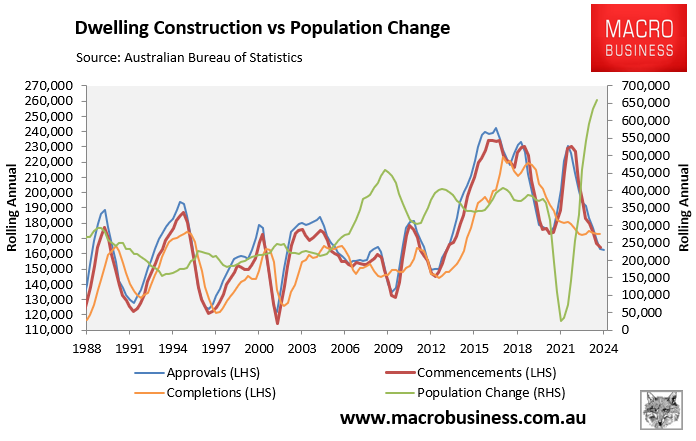
KPMG shows that at the end of 2023, construction had yet to begin on more than 37,000 dwellings that had been approved. This represents a 9.4% increase on the five-year average:
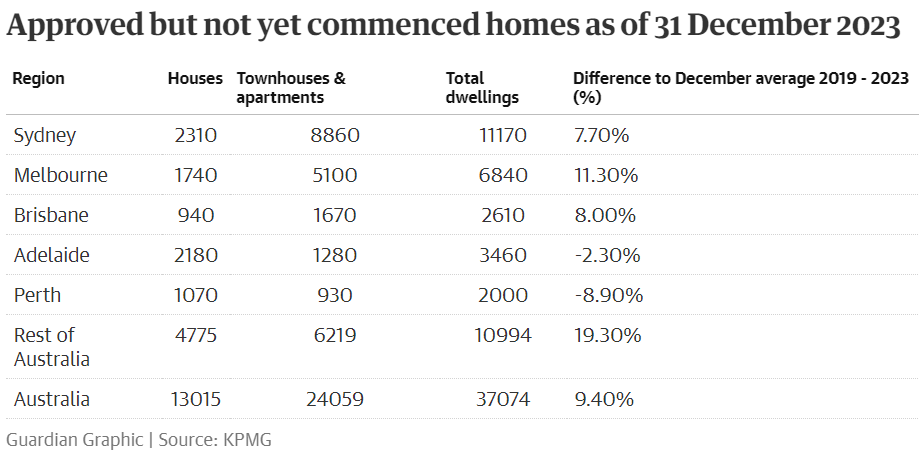
These dwellings would provide housing for nearly 100,000 people, based on the nation’s average household size of 2.5 people. Sydney and Melbourne make up almost half of all “approved but not yet commenced”.
YIMBY’s favoured townhouses and apartments comprise about 80% of dwellings that are awaiting construction.
KPMG’s urban economist Terry Rawnsley says factors such as rising construction costs and labour shortages have contributed to the stalled housing commencements.
“With all the construction price increases and where interest rates have landed, it’s hard for developers to make those more medium to high-density projects stack up”, he said.
“Sometimes people also forget that interest rates also impact on the developer side as well – it means they can’t borrow as much to get the projects up and running”.
Last month, apartment developer Tim Gurner admitted that relaxing planning rules won’t magically boost housing construction:
[Gurner] estimated that less than half of the 51,000 new dwellings approved in Victoria last year would actually get built, due to poor pre-sales, financing or developer capability.
The Municipal Association of Victoria says that, as of September, 120,000 houses, townhouses and units had been approved with construction yet to begin, with councils using this to hit back at claims they are to blame for the housing bottleneck.
The Daily Telegraph also report stated that “Almost one billion worth of housing in one of Sydney’s most affordable local government areas is yet to be built despite the DAs being approved up to five years ago”:
The DAs represent potential homes for an estimated 1600 families, but are yet to be activated with construction and labour costs, rising interest rates and government taxes blamed for the delays…
Liverpool Mayor Ned Mannoun said it was taking between five to seven years from DA approval to a “key in the door.
The Herald-Sun likewise reported that inner Melbourne is littered with empty sites with development approvals that have yet to commence construction:
City of Melbourne records show there are 71 projects with planning permits that have yet to commence construction around the city, with 90 buildings and about 17,500 apartments attached to the approvals.
Melbourne Lord Mayor Sally Capp said the council was aware of growing timelines between planning approvals and construction commencing, and said it was largely as a result of increased construction costs and materials and trades shortages.
“The pipeline has definitely slowed in terms of permits moving through to construction and ultimately through to completion,” Ms Capp said.
“We are still actively managing all of those sites because it’s important to us that we don’t have dormant sites; we can’t have zombie sites in the city, because that’s just unacceptable”.
The following chart from Alex Joiner, chief economist at IFM Investors, shows that Australia has a significant pipeline of 135,250 homes that have been approved for construction but work has not yet commenced:
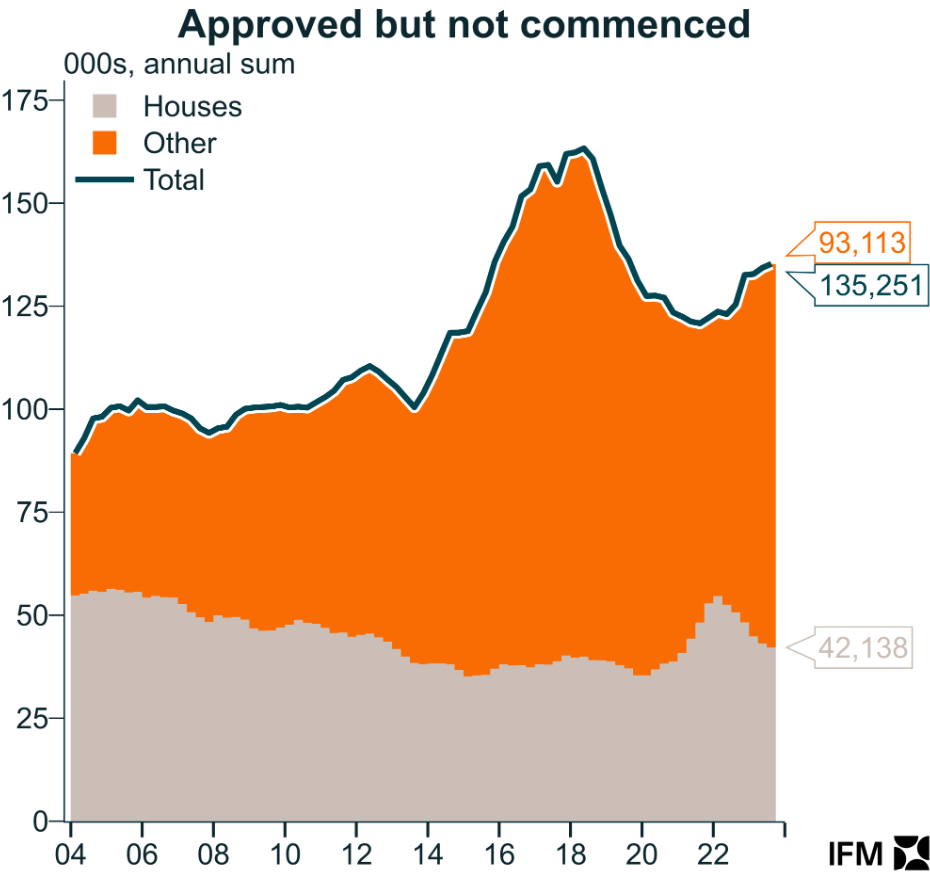
This pipeline of homes is awaiting construction because builders cannot afford to proceed:
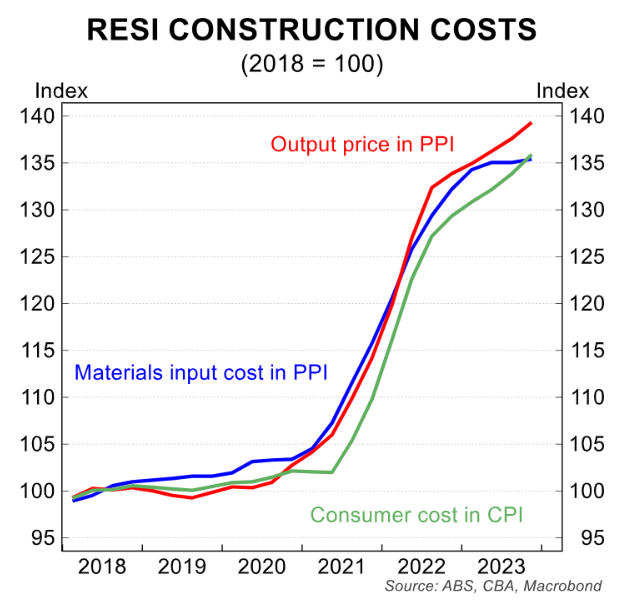
Meanwhile, home builders are going bust at an alarming rate, with 2439 entering external administration in the first 10 months of this financial year:
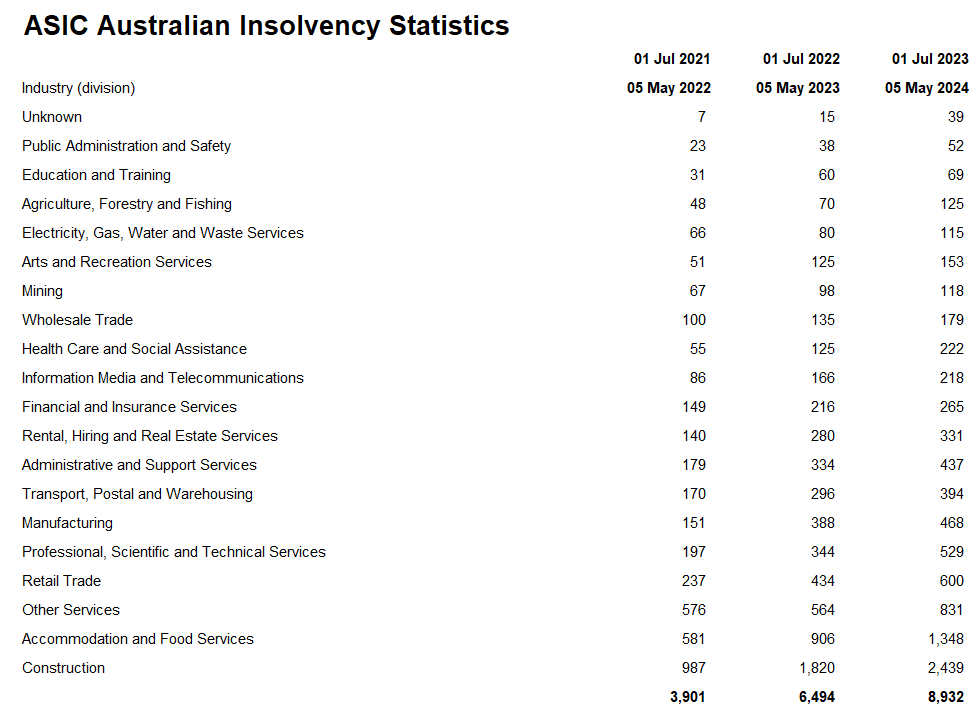
Finally, Australian home builders are competing for workers with state government “Big Build” infrastructure projects.
Clearly, the YIMBY’s solution of eliminating planning restrictions allow high-rise everywhere will not solve Australia’s housing supply problem.
A far cheaper, easier, and faster solution is to restrict net overseas migration to a level that is below the nation’s capacity to build housing and infrastructure.
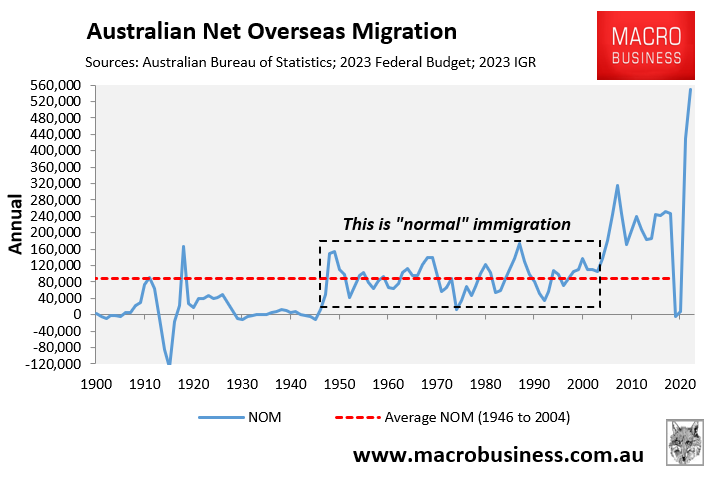
Otherwise, housing demand from rapid population growth will forever exceed supply.

